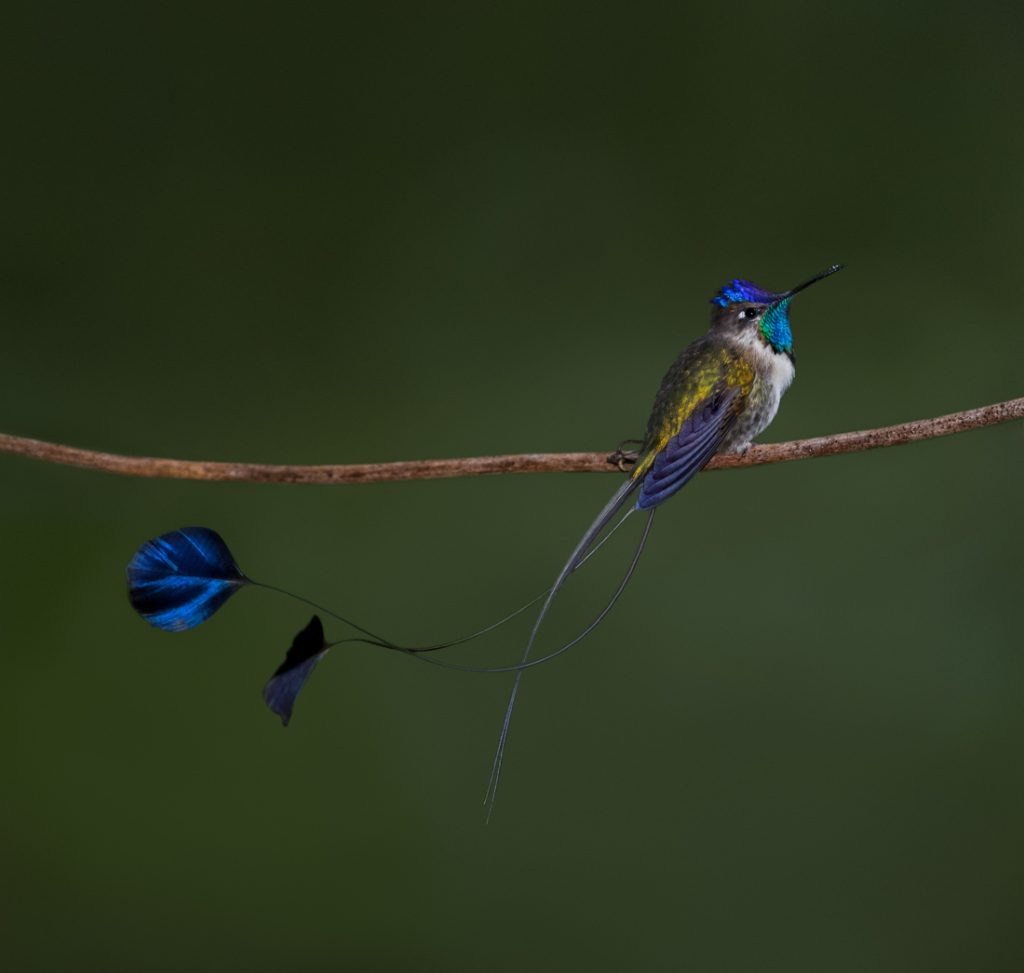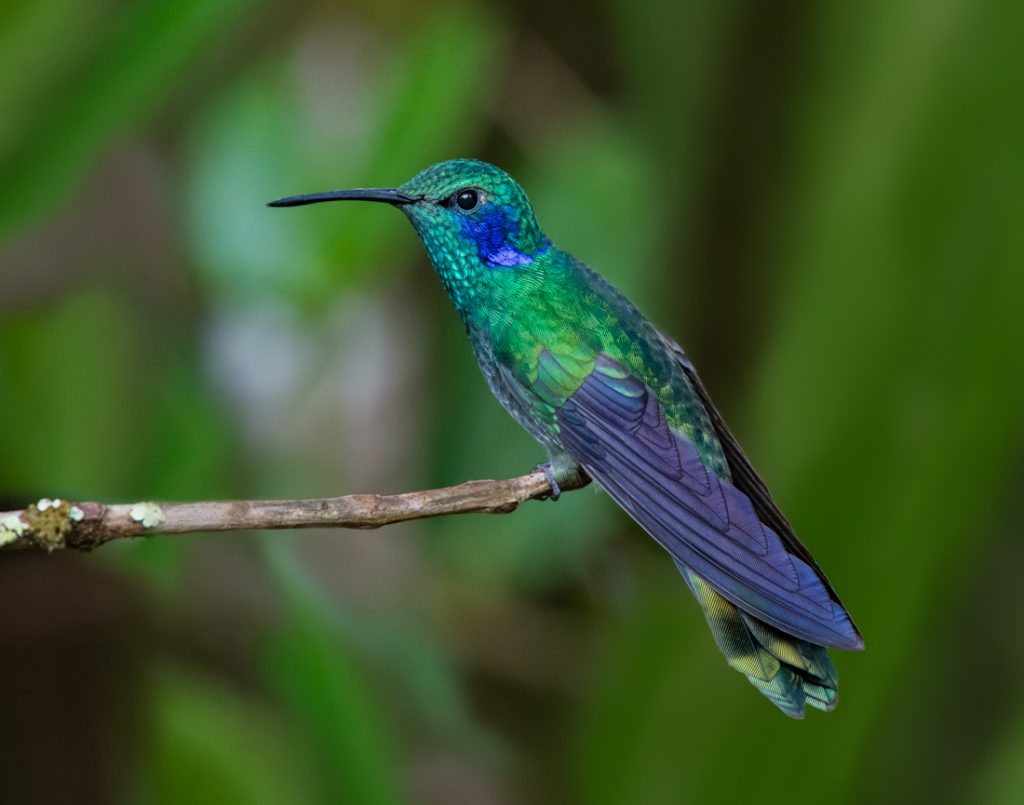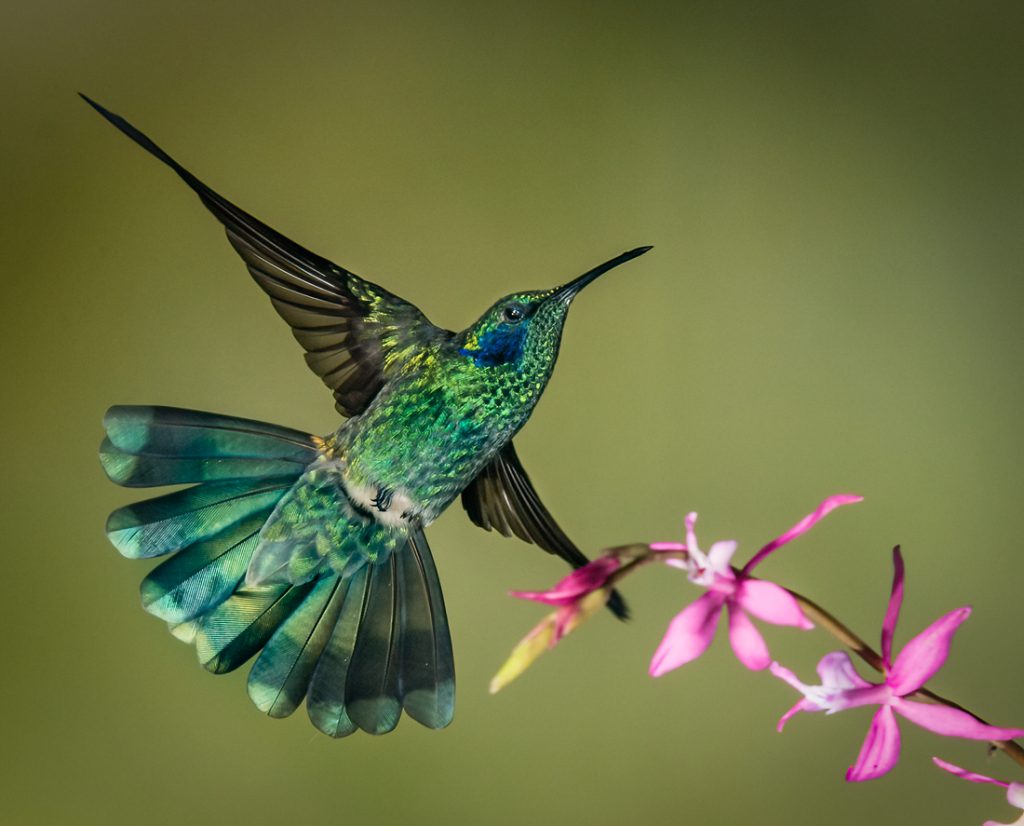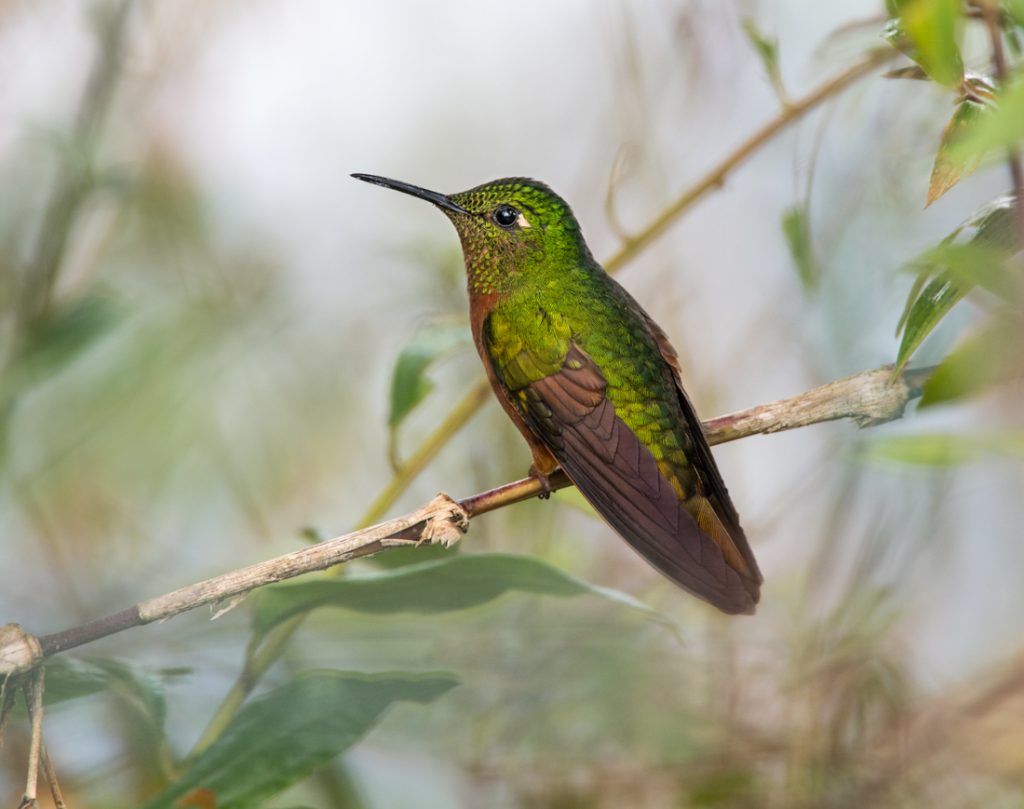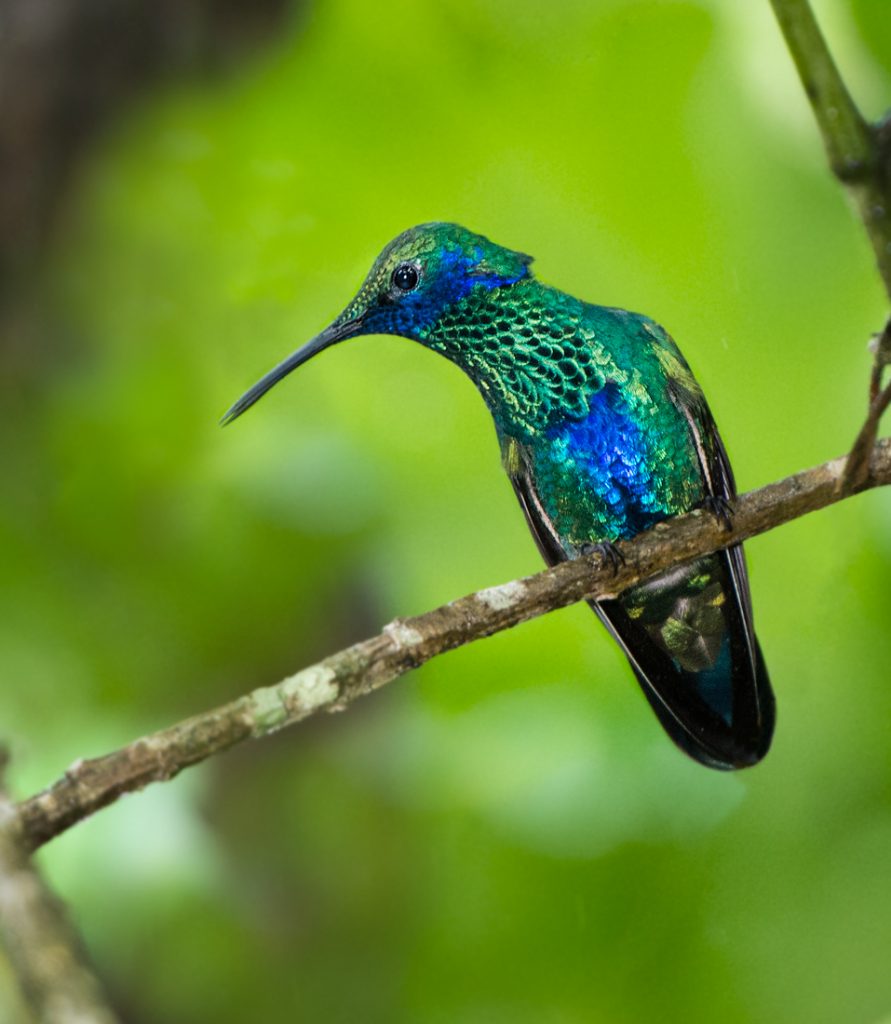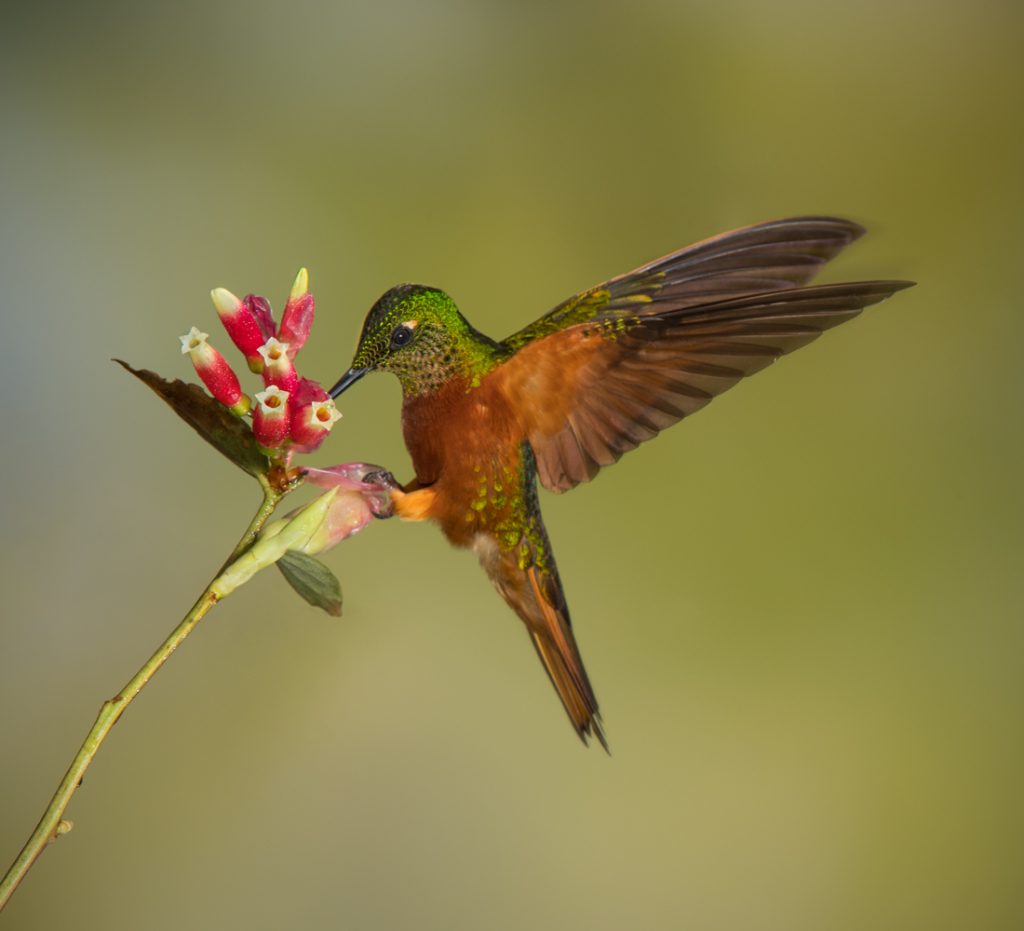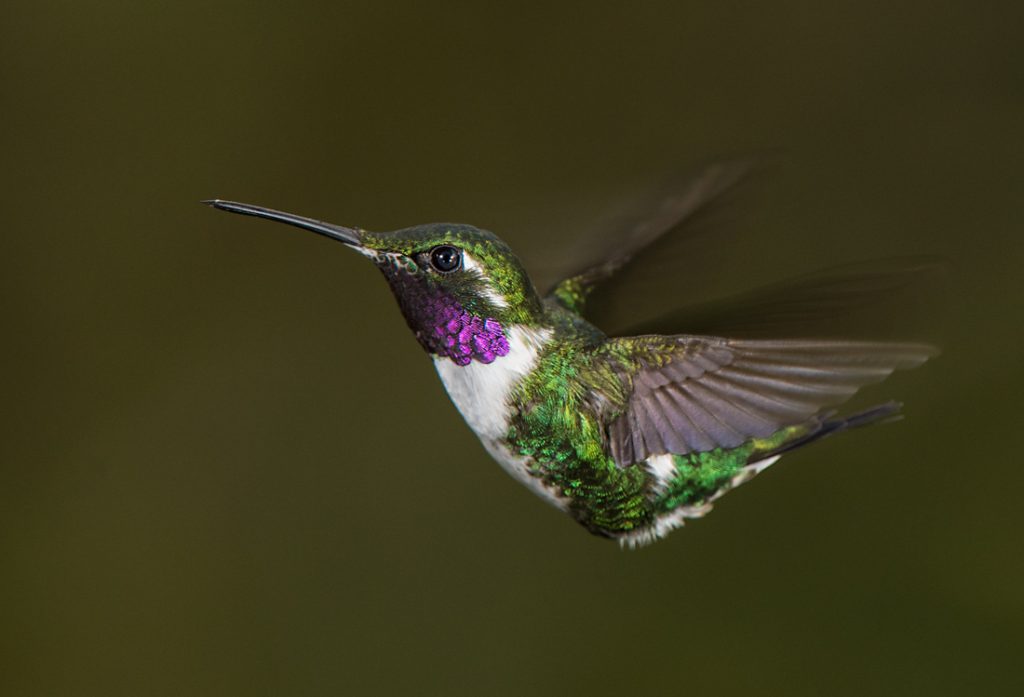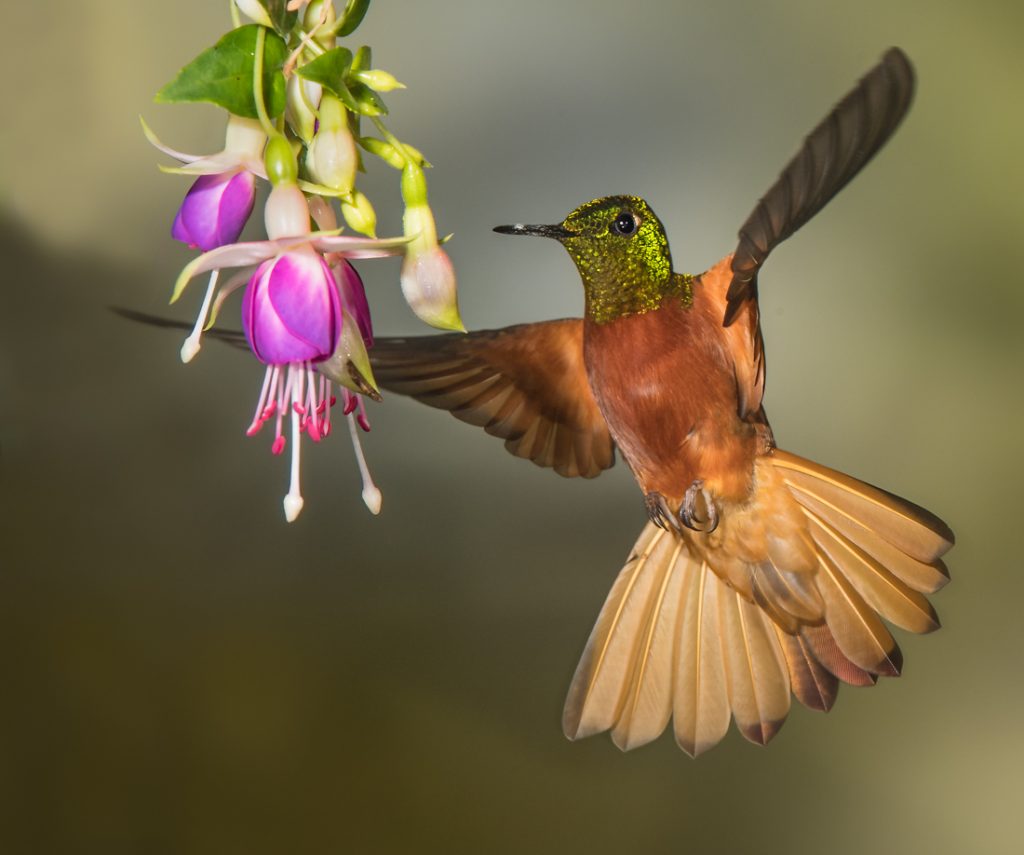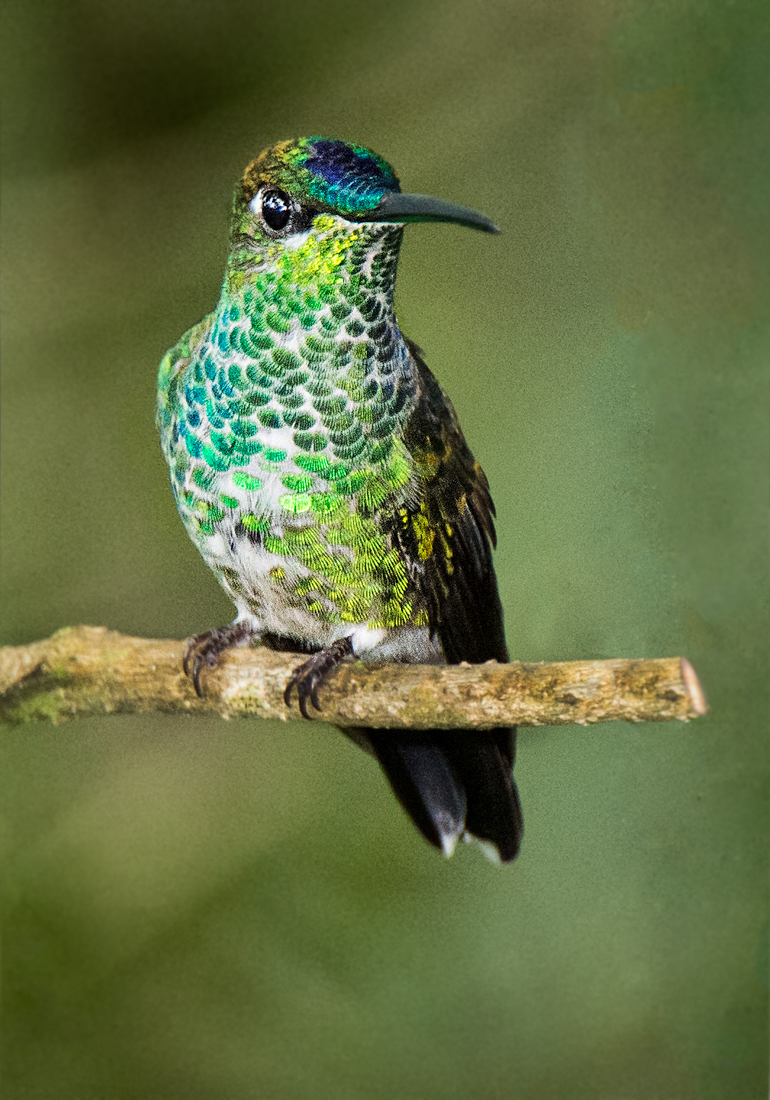
Daniel Lebbin, Vice President of Threatened Species, American Bird Conservancy
My first time seeing the Marvelous Spatuletail was on December 4th, 2004 as a graduate student with two birding friends while on an adventurous road trip through northern Peru. At this time there were no bird feeders that attracted spatuletails and the chances of seeing one were far from guaranteed. Following directions from a bird finding guide published by Thomas Valqui in July of the same year, we scrambled across a steep slope covered in grassy scrub near the town of San Lucas de Pomacochas and eventually caught glimpses of a male spatuletail darting around us. Perhaps it was more like seeing the ghost of the spatuletail, because while flying at speed, it is easier to see the negative space between the birds’ body and the dark spots of the tail feathers trailing behind. The spatuletail revealed itself just barely to us that day, and kept most of its mysteries hidden. For more about the Marvelous Spatuletail, see this profile at ABC’s website complete with a short video clip I made at Huembo.
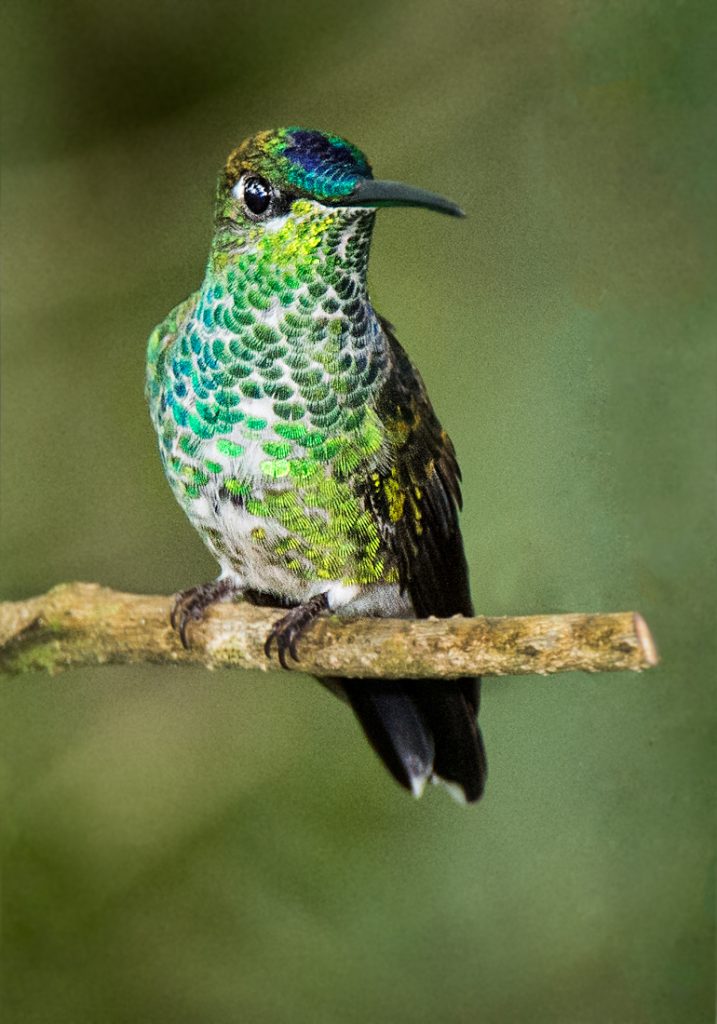
My next encounter with the Spatuletail was completely different. In June of 2010, I returned to northern Peru as an international project officer with American Bird Conservancy, which had been helping the Peruvian conservation organization Asociación Ecosistemas Andinos (ECOAN) protect and restore habitat for the Marvelous Spatuletail in the same area around Pomacochas since 2005.
In 2006, ABC and ECOAN worked with the Pomacochas community to establish a 77-acre ecological easement to conserve habitat for the spatulatetail and named it Huembo. The area contained a degraded landscape that had been burned frequently, with remnant patches of native scrub and cloud forests hugging stream sides in steep ravines. ECOAN’s president, Constantino Aucca, who goes by Tino, was undeterred. In the subsequent years he and his team at ECOAN continued to engage the local community, established a tree nursery, and produced, planted and grew hundreds of thousands of trees and shrubs within Huembo Reserve and on many other privately and communally owned parcels in the area. Many of the shrubs planted were favored food plants of the spatuletail. ECOAN hired the local community member Santos Montenegro, who knew where to find spatuletail leks, nests, and food plants to administer the reserve, construct hummingbird feeders, and guide visitors.
ABC and ECOAN built a visitor center at Huembo and deployed hummingbird feeders in two areas of the reserve. Together, they also planted an agroforestry demonstration plot with shade coffee and passionfruit. By 2010, the spatuletail was virtually guaranteed at Huembo’s feeders and could easily be seen foraging on bushes planted by ECOAN. Santos knew of a lek where males displayed and danced for females just across the road from the reserve. The Spatuletail’s full magic was on display.
In 2013, ABC and ECOAN struck a deal with the local communities to expand Huembo to almost 95 acres in exchange for assisting the community with legal work to create additional Private Conservation Areas on their lands upstream at higher elevations to protect their watersheds. This deal took longer than expected to achieve the additional protected areas, but the 386-acre Arroyo Negro Private Conservation Area was recognized by the Peruvian government on May 1, 2019. A second Private Conservation Area called San Lorenzo remains in process for approval by the Peruvian government.
In total, I have made 10 visits to Huembo across 9 ABC trips to northern Peru. Some were quick stops on the way to or from Abra Patricia Reserve (and Owlet Lodge), and others were longer with at least one overnight visit. At times I was alone with ECOAN staff discussing ongoing project activities, and others guiding birding tours of ABC supporters and planting trees.
The Marvelous Spatuletail is everyone’s birding highlight of Huembo for sure, but the other hummingbirds are worth the visit in their own right. Other hummingbirds I have seen there include Brown Violetear, Lesser Violetear, Sparkling Violetear, Purple-throated Sunangel, Green-tailed Trainbearer, Bronzy Inca, Chesnut-breasted Coronet, Violet-fronted Brilliant, Purple-collared Woodstar, White-bellied Woodstar, Little Woodstar, White-bellied Hummingbird, Andean Emerald. I even once photographed a hummingbird I could not identify and wondered if it could have been a hybrid (see photos). I never get all these species in a single visit, but usually see about a dozen species in an hour sitting at the main feeding station. Other great birds include Canada Warblers that spend the boreal winter here, endemic Buff-bellied Tanager and Speckle-chested Piculet can be seen in mixed flocks within the shade-coffee plot. Sickle-winged Guans, shy where hunted, are accustomed to visiting fruit tables here. Distant flyover flocks of large Psittacara parakeets offer identification challenge (Mitred or Scarlet-fronted? One needs good looks to tell). These flocks can exceed 100 parakeets in number.
My most recent visit to Huembo was in 2015, and it is hard to believe that it was already so long ago. Much has changed over the years at Huembo, including since my last visit. The museum was renovated and replaced with additional rooms, and a better kitchen and dining area was added for visitors. These and additional improvements have been made by ECOAN with ABC support. I am sure the trees have gotten taller and thicker in the shade-coffee farm too. Huembo and its spatuletails still have more to show me. For example, I know the Green-throated (Straw-backed) Tanager has occasionally been seen there, and I have yet to see this species here or anywhere else. Large areas of restoration have matured since I last visited and now likely are inhabited by different bird species. I have yet to explore the gallery forest along the Rio Chido downhill of the reserve, from where the groaning voices of displaying Andean Cock-of-the-Rock emerge.
The conservation story is not over either. More habitat protection is needed to conserve the Spatuletail. There are plans for a large Regional Conservation Area protecting Spatuletail habitat near the famous Gocta waterfowl, but this area has yet to be declared. Gocta Waterfall is the third tallest in the world, and tourists frequently come to see it. ECOAN built a tree nursery at the village of Cocachimba below the waterfowl as part of its regional reforestation work. Seeing this conservation area completed would be a great victory for Peru, its people, and the Spatuletail.
For further information:
- Read how the Spatuletail made it onto a Peruvian postage stamp: Peruvian Postage Stamps Feature Endangered Birds | American Bird Conservancy (abcbirds.org)
- See how local school children dress up as spatuletails to dance: In Latin America, It Takes a Village to Save Rare Hummingbirds (abcbirds.org)
- Read how ECOAN’s work and hummingbird feeders are spreading a culture of conservation in northern Peru: Return to Abra Patricia: A Culture of Peruvian Conservation is Spreading | American Bird Conservancy (abcbirds.org)
- Read about Adrian Torres, a rising conservation leader at ECOAN who has a spatuletail tattoo on his arm: Meet Four Bird Conservation Superstars | American Bird Conservancy (abcbirds.org)



